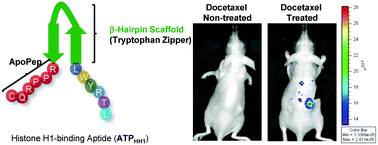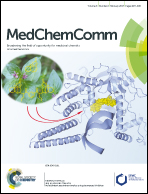A histone H1-binding-aptide-based apoptosis imaging probe for monitoring tumor responses to cancer therapy†‡
Abstract
Here we report the feasibility of using a high-affinity histone H1-binding peptide as a potential molecular apoptosis imaging probe. The Cy5.5-labeled peptide showed high selectivity for drug-treated apoptotic tumors compared with non-apoptotic tumors in various in vivo settings, enabling detection of tumor responses to both docetaxel chemotherapy and Herceptin antibody therapy as early as 12 hours after treatment with a high signal-to-background ratio, even at extremely low doses.


 Please wait while we load your content...
Please wait while we load your content...